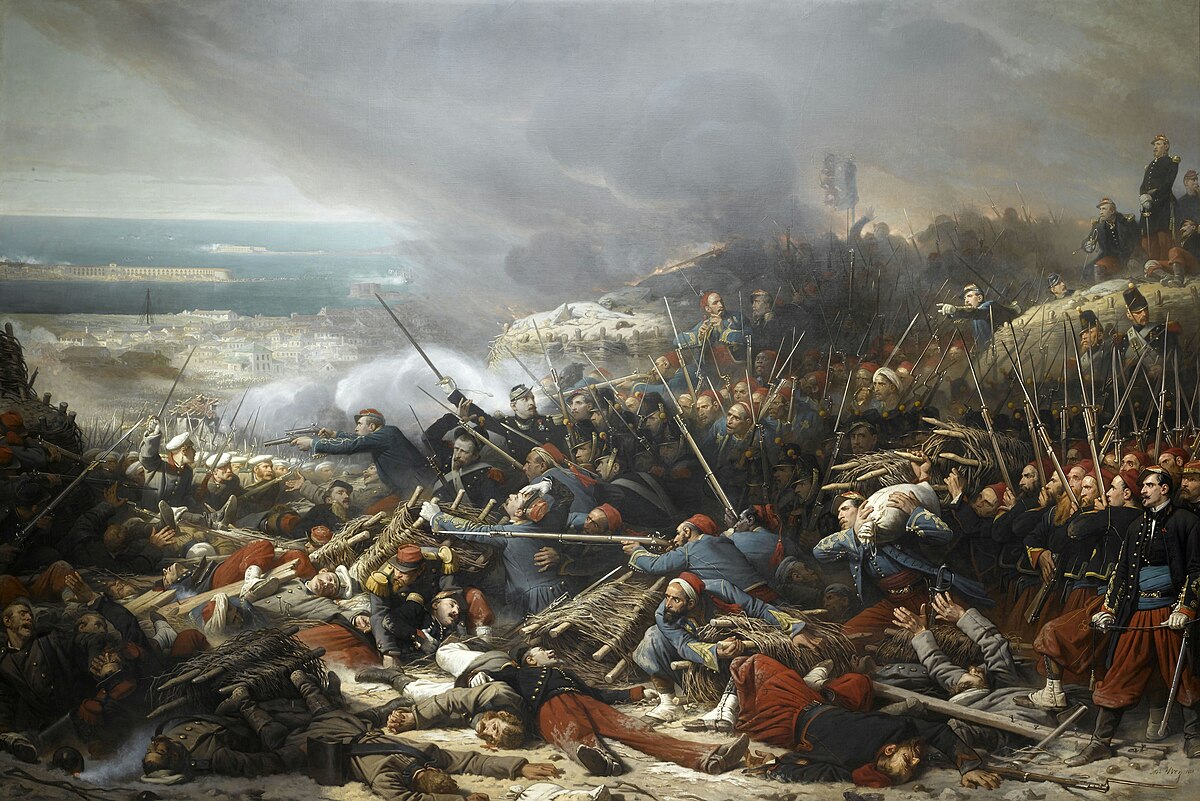
Battle of Malakoff
SevastopolFor months the siege of Sevastopol continued. During July the Russians lost on an average of 250 men a day, and finally the Russians decided to break the stalemate and gradual attrition of their army. Gorchakov and the field army were to make another attack at the Chernaya, the first since the Inkerman. On 16 August, both Pavel Liprandi and Read's corps furiously attacked the 37,000 French and Sardinian troops on the heights above Traktir Bridge. The assailants came on with the greatest determination, but they were ultimately unsuccessful. At the end of the day, the Russians drew off leaving 260 officers and 8,000 men dead or dying on the field; the French and British only lost 1,700. With this defeat the last chance of saving Sevastopol vanished.
The same day, a determined bombardment once more reduced the Malakoff and its dependencies to impotence, and it was with absolute confidence in the result that Marshal Pélissier planned the final assault. At noon on 8 September 1855, the whole of Bosquet's corps suddenly attacked all along the right sector. The fighting was of the most desperate kind: the French attack on the Malakoff was successful, but the other two French attacks were repelled. The British attack on the Redan was initially successful, but a Russian counterattack drove the British out of the bastion after two hours after the French attacks on the Flagstaff Bastion were repelled. With the failure of the French attacks in the left sector but with the fall of the Malakoff in French hands further attacks were cancelled. The Russian positions around the city were no longer tenable.
Throughout the day the bombardment mowed down the massed Russian soldiers along the whole line. The fall of the Malakoff was the end of the siege of the city. That night the Russians fled over the bridges to the north side, and on 9 September the victors took possession of the empty and burning city. The losses in the last assault had been very heavy: for the Allies over 8,000 men, for the Russians 13,000. At least nineteen generals had fallen on the final day and with the capture of Sevastopol the war was decided. No serious operations were undertaken against Gorchakov who, with the field army and the remnants of the garrison, held the heights at Mackenzie's Farm. But Kinburn was attacked by sea and, from the naval point of view, became the first instance of the employment of Ironclad warships. An armistice was agreed upon on 26 February and the Treaty of Paris was signed on 30 March 1856.
